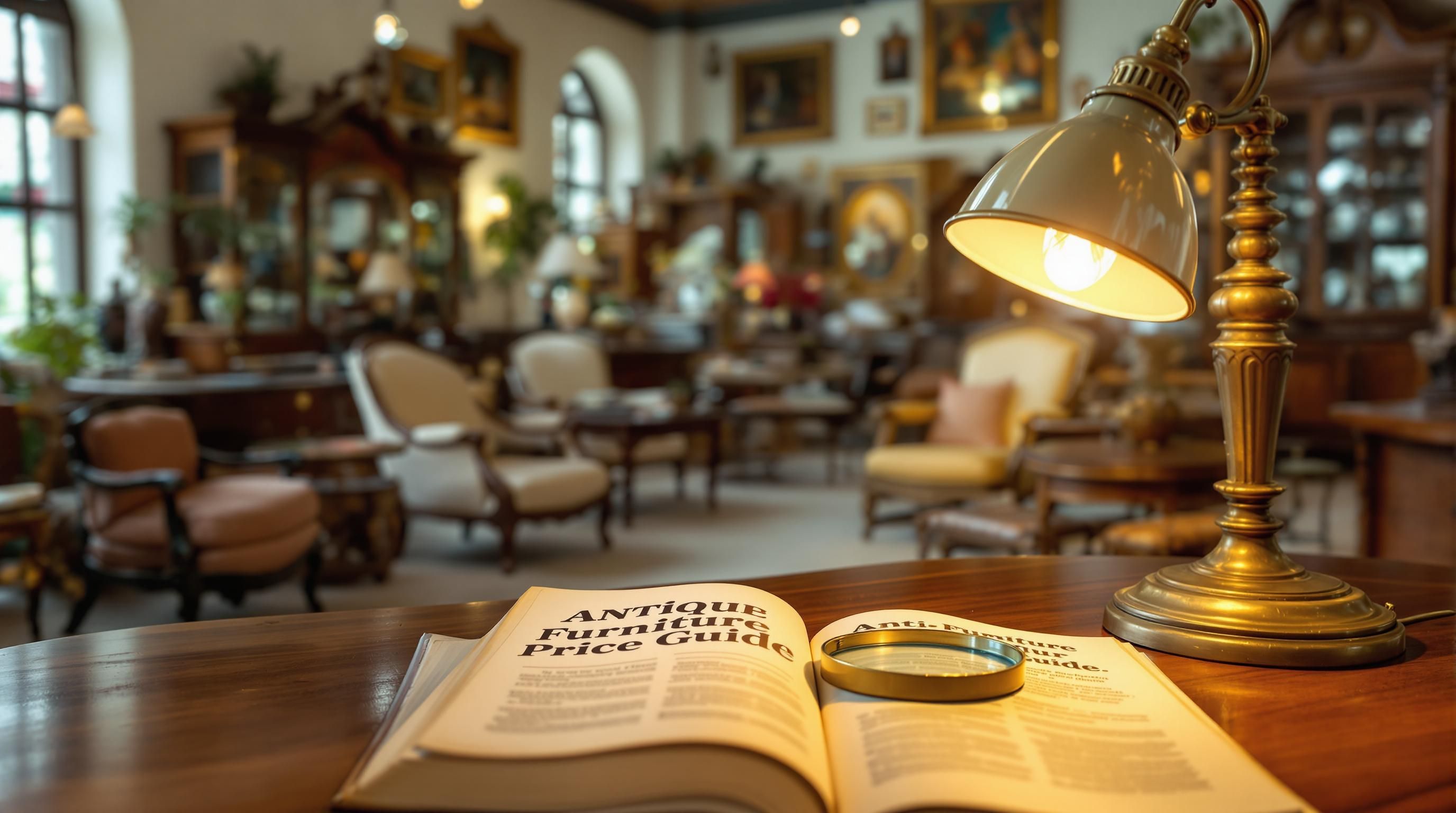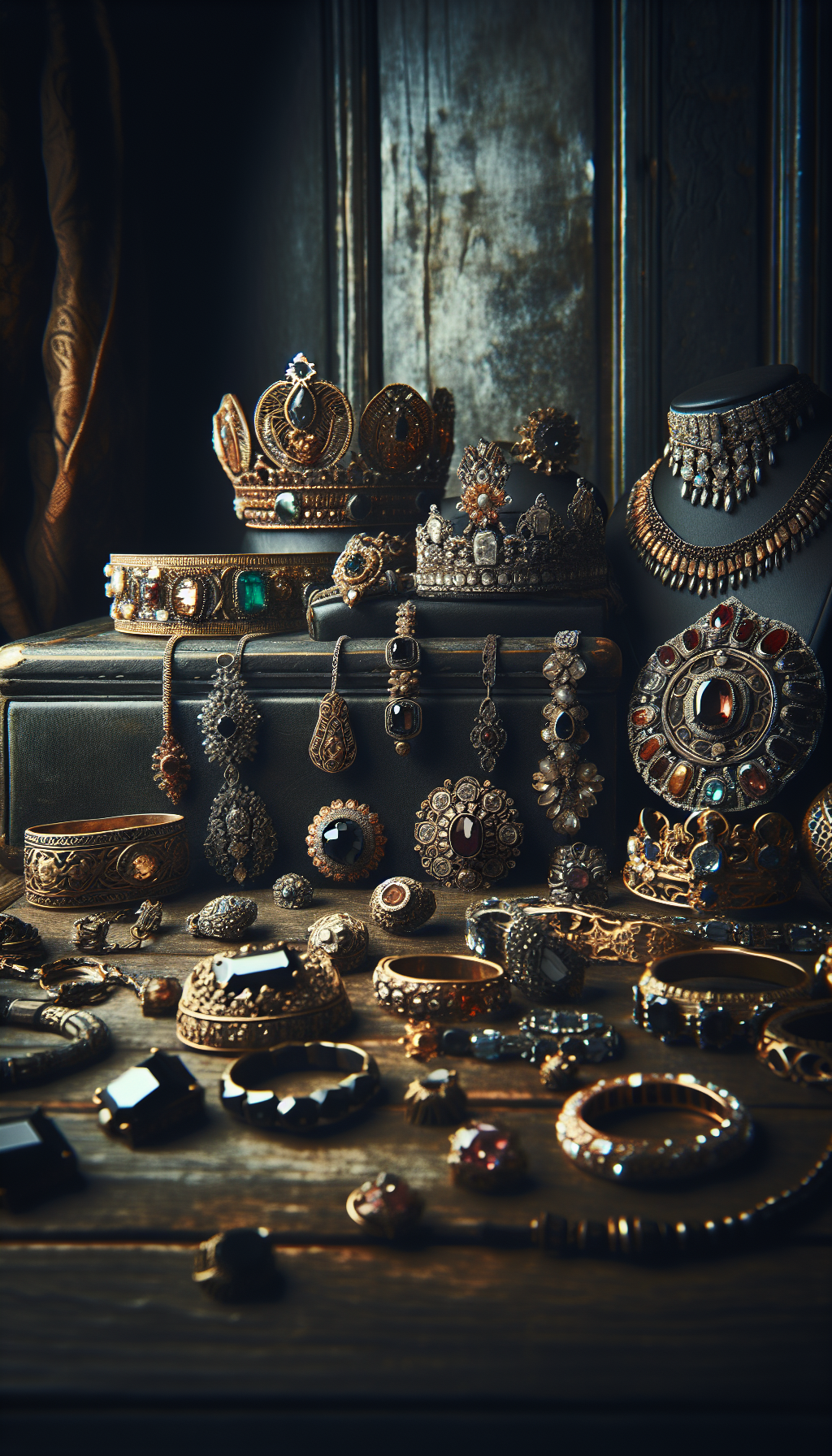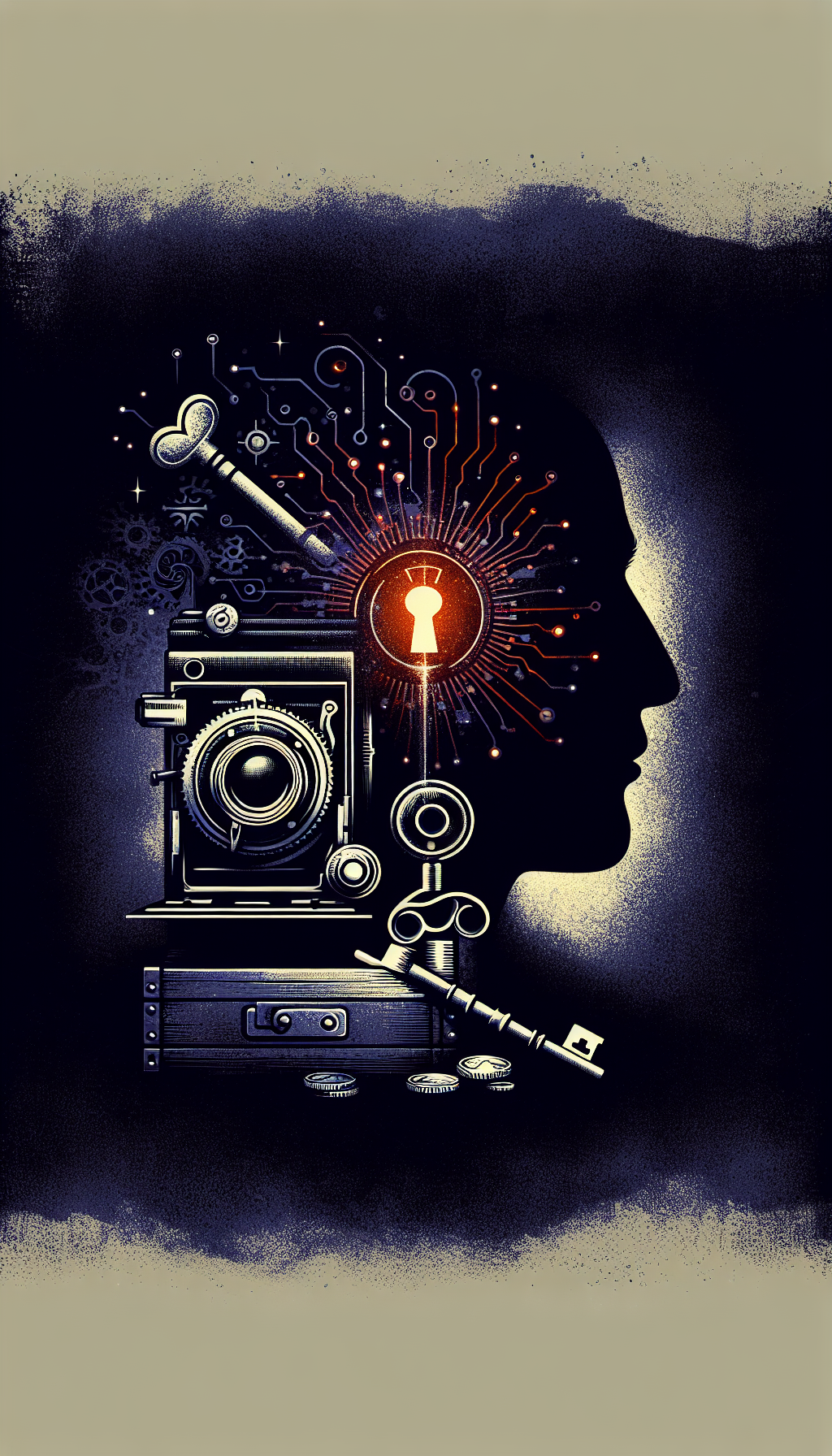Introduction to Antique Furniture Valuation
Antique furniture represents more than just functional household items—they’re pieces of history that reflect craftsmanship, artistic movements, and cultural values of their time. The value of these pieces can range dramatically from a few hundred dollars to hundreds of thousands for rare, historically significant items.
Understanding what drives these values requires knowledge of various factors including age, condition, rarity, provenance, and current market demand. This guide will provide you with the tools and resources to navigate the sometimes complex world of antique furniture valuation.
Antique Furniture Market Insights
$6.4 Billion: Global antique furniture market size in 2022
8-12%: Annual appreciation rate for high-quality antique furniture
75%: Reduction in value for damaged or heavily restored pieces
Key Factors That Determine Antique Furniture Value
Age and Authenticity
Generally, older pieces command higher prices, particularly those made before the industrial revolution when furniture was entirely handcrafted. However, age alone doesn’t guarantee value—the piece must be authentic. Reproductions, even if they’re 100 years old themselves, typically don’t reach the value of original period pieces.
Condition
The condition of antique furniture significantly impacts its value. Original finishes, hardware, and minimal repairs generally command higher prices. While some patina (the natural aging of wood and finishes) is desirable, damage such as water marks, deep scratches, broken pieces, or pest damage can dramatically decrease value.
Rarity and Desirability
Pieces that are rare, either because few were made or few have survived, typically command premium prices. Similarly, furniture made by renowned craftsmen or from sought-after periods will be more valuable. Currently, mid-century modern pieces are experiencing high demand, while some Victorian styles have seen decreasing interest in recent years.
Provenance
Documented history of ownership, especially when connected to historical figures or events, can dramatically increase value. Furniture with provenance that can be verified through documentation often sells for multiples of similar pieces without such history.
Condition Assessment Factors
Check applicable items to understand your antique's condition status
<li class="condition-checklist__item">
<input type="checkbox" disabled aria-hidden="true">
<span>Original finish intact</span>
</li>
<li class="condition-checklist__item">
<input type="checkbox" disabled aria-hidden="true">
<span>All original hardware present</span>
</li>
<li class="condition-checklist__item">
<input type="checkbox" disabled aria-hidden="true">
<span>No structural damage or repairs</span>
</li>
<li class="condition-checklist__item">
<input type="checkbox" disabled aria-hidden="true">
<span>Minimal surface scratches or wear</span>
</li>
<li class="condition-checklist__item">
<input type="checkbox" disabled aria-hidden="true">
<span>No water damage or stains</span>
</li>
<li class="condition-checklist__item">
<input type="checkbox" disabled aria-hidden="true">
<span>No evidence of insect damage</span>
</li>
<li class="condition-checklist__item">
<input type="checkbox" disabled aria-hidden="true">
<span>Original upholstery (if applicable)</span>
</li>
<li class="condition-checklist__item">
<input type="checkbox" disabled aria-hidden="true">
<span>Proper period-appropriate patina</span>
</li>
Identifying Antique Furniture Styles and Periods
Major Antique Furniture Periods & Styles
- 1700-1755
Queen Anne
Characterized by graceful curves, cabriole legs, and restrained ornamentation. Notable for its comfort and proportion. Valuable examples in cherry, walnut, or maple can range from $2,000-$20,000 depending on condition and rarity. - 1750-1790
Chippendale
Famous for elaborate carvings, Chinese-inspired designs, and Gothic elements. Authentic period Chippendale pieces command $5,000-$50,000+ with exceptional examples reaching six figures at auction. - 1780-1820
Federal/Neoclassical
Distinguished by straight lines, inlay details, and classical motifs. American Federal pieces by recognized cabinetmakers like Duncan Phyfe can fetch $3,000-$30,000. - 1820-1850
Empire
Bold, heavy designs influenced by Napoleon's empire. Features dark wood, imposing proportions, and classical ornamentation. Quality American Empire pieces range from $1,000-$15,000. - 1840-1900
Victorian
Encompasses several revival styles with ornate decoration and dark woods. Market currently values Victorian pieces lower than other periods, typically $500-$5,000 for quality items. - 1880-1910
Arts & Crafts/Mission
Reaction against Victorian excess with simple lines and visible construction. Stickley pieces lead this category, ranging from $2,000-$25,000 for authenticated works. - 1920-1940
Art Deco
Sleek, geometric designs with luxurious materials. High-end Art Deco pieces from renowned designers can command $3,000-$30,000+. - 1945-1975
Mid-Century Modern
Clean lines, organic shapes, and innovative materials. Designer pieces by Eames, Saarinen, or Wegner typically range from $1,000-$15,000+, with rare examples reaching much higher.
Identifying Makers and Signatures
Many valuable antique pieces were created by specific cabinetmakers or companies whose work is highly collectible. Look for:
- Signatures or labels: Often found on the back, inside drawers, or underneath pieces
- Distinctive construction techniques: Dovetail joints, specific hardware, or unique design elements
- Regional characteristics: Different regions developed their own furniture styles and techniques
Pieces by renowned makers like Thomas Chippendale, Duncan Phyfe, Gustav Stickley, or companies like Kittinger and Baker can command significant premiums over similar unmarked pieces.
Current Price Ranges for Popular Antique Furniture Categories
Antique Furniture Market Values (2023)
Price ranges for furniture in good to excellent condition
</tbody>
</table>
It’s important to note that these values represent retail prices at antique shops or well-established auction houses. When selling privately or to dealers, expect to receive 30-50% of these values, as dealers need to account for overhead and profit margins.
Methods for Determining Your Antique Furniture's Value
Professional Appraisals
The most reliable method for determining value is to consult a professional appraiser who specializes in antique furniture. Look for appraisers with credentials from organizations like:
- The American Society of Appraisers (ASA)
- International Society of Appraisers (ISA)
- Appraisers Association of America (AAA)
Professional appraisals typically cost $100-$300 per hour, with most furniture pieces requiring 1-2 hours for thorough evaluation. This investment is worthwhile for high-value items, insurance purposes, or estate settlements.
Price Guides and Reference Books
Printed and online price guides can provide useful benchmark values, though they may not account for regional market variations or the specific condition of your piece.
Some respected guides include:
- Kovels’ Antiques & Collectibles Price Guide (updated annually)
- Antique Trader Furniture Price Guide
- Miller’s Antiques Handbook & Price Guide
- Warman’s Antiques & Collectibles
Online Resources and Databases
Several online resources can help you research comparable sales and current market values:
- Kovels.com - Subscription-based price database
- LiveAuctioneers - Archives of past auction results
- Worthpoint - Extensive database of sold antiques
- Chairish and 1stDibs - Current retail prices for similar items
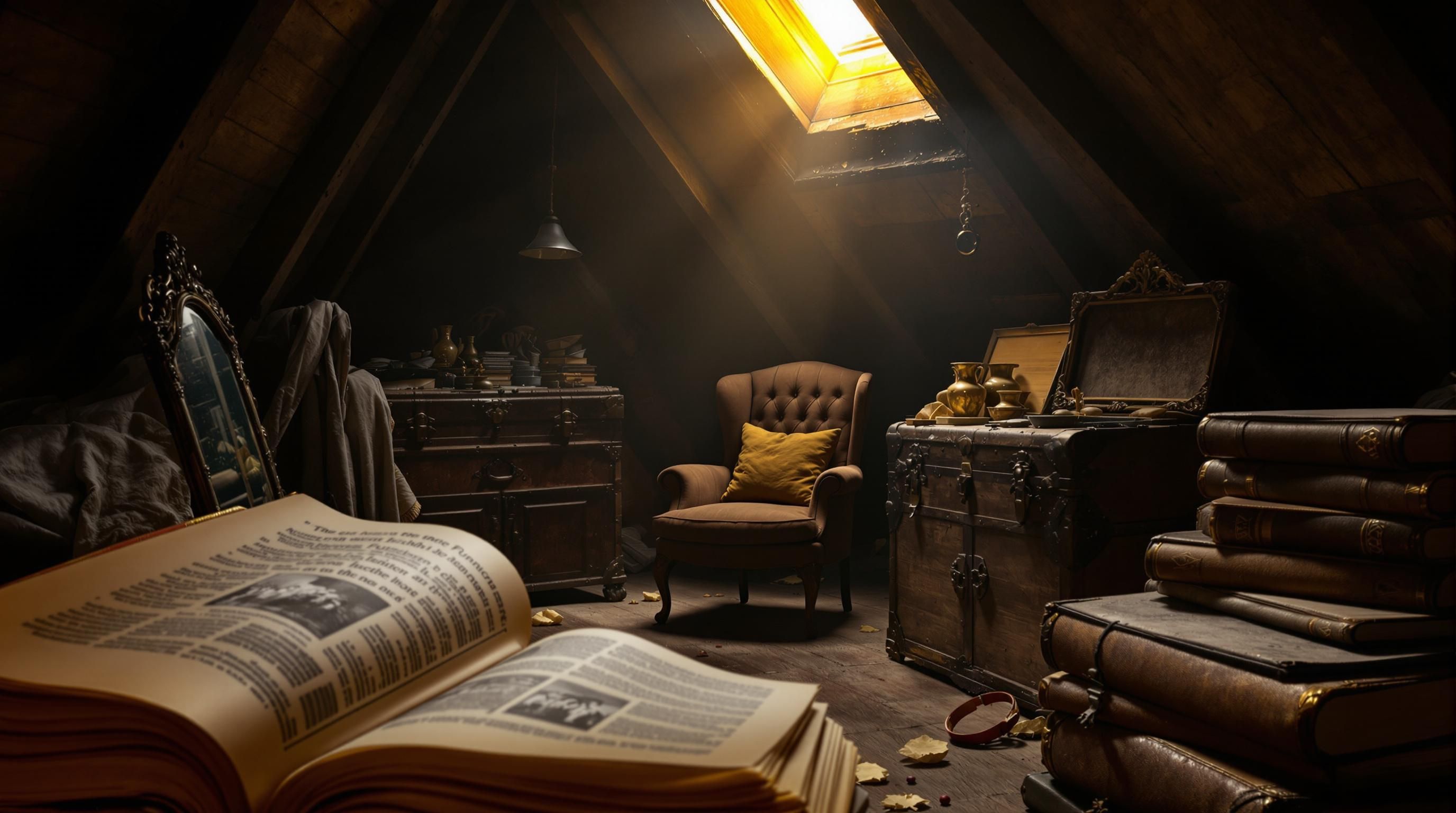
Auction Results and Market Analysis
Researching recent auction results provides valuable insights into current market values. Major auction houses like Sotheby’s, Christie’s, and Bonhams publish their results online, while specialized furniture auctions at houses like Skinner or Brunk provide excellent comparables.
When researching comparable sales, look for pieces that:
- Match your furniture’s style, age, and maker
- Are in similar condition
- Sold within the past 1-3 years
- Include detailed descriptions and clear photos
Notable Recent Antique Furniture Auction Sales
Selected high-profile sales from major auction houses
| Category | Price | Notes |
|---|---|---|
| Queen Anne Highboy (1720-1750) | $8,000-$45,000 | Higher values for original brasses, finishes, and documented provenance |
| Chippendale Side Chair (1750-1790) | $1,500-$12,000 | Philadelphia examples command highest prices; reproductions 1/10th the value |
| Federal Sideboard (1790-1815) | $4,000-$25,000 | Inlaid examples with provenance reach premium prices |
| Victorian Parlor Set (1850-1900) | $800-$3,500 | Complete matched sets worth more than individual pieces |
| Mission Oak Desk (1900-1920) | $1,200-$8,000 | Signed Stickley pieces command highest values |
| Art Deco Dining Set (1920-1940) | $3,000-$20,000 | Exotic woods and unique designs from known makers most valuable |
| Mid-Century Modern Lounge Chair (1950-1970) | $1,200-$15,000 | Original Eames, Wegner, and Saarinen designs most collectible |
| French Provincial Bedroom Set (1950-1970) | $1,000-$4,000 | Quality reproductions from major manufacturers |
</tbody>
</table>
Understanding Different Types of Value
Replacement Value vs. Market Value
Replacement Value (also called insurance value) represents what it would cost to replace a piece with one of similar quality, age, and characteristics in a retail setting. This is typically the highest valuation and is used for insurance policies.
Market Value (also called fair market value) represents what a willing buyer would pay a willing seller when neither is under pressure. This is typically 30-50% less than replacement value and is used for estate taxes, donations, and realistic selling expectations.
Wholesale Value vs. Retail Value
Wholesale Value is what a dealer would pay for your piece, accounting for their overhead and profit margin. Expect wholesale offers to be 30-60% of retail value.
Retail Value is what you’d pay in an antique store or gallery. This includes the dealer’s mark-up for overhead, expertise, and profit.
Sentimental Value
While impossible to quantify, sentimental value often exceeds market value for family heirlooms. Consider this non-monetary factor when deciding whether to sell an antique piece.
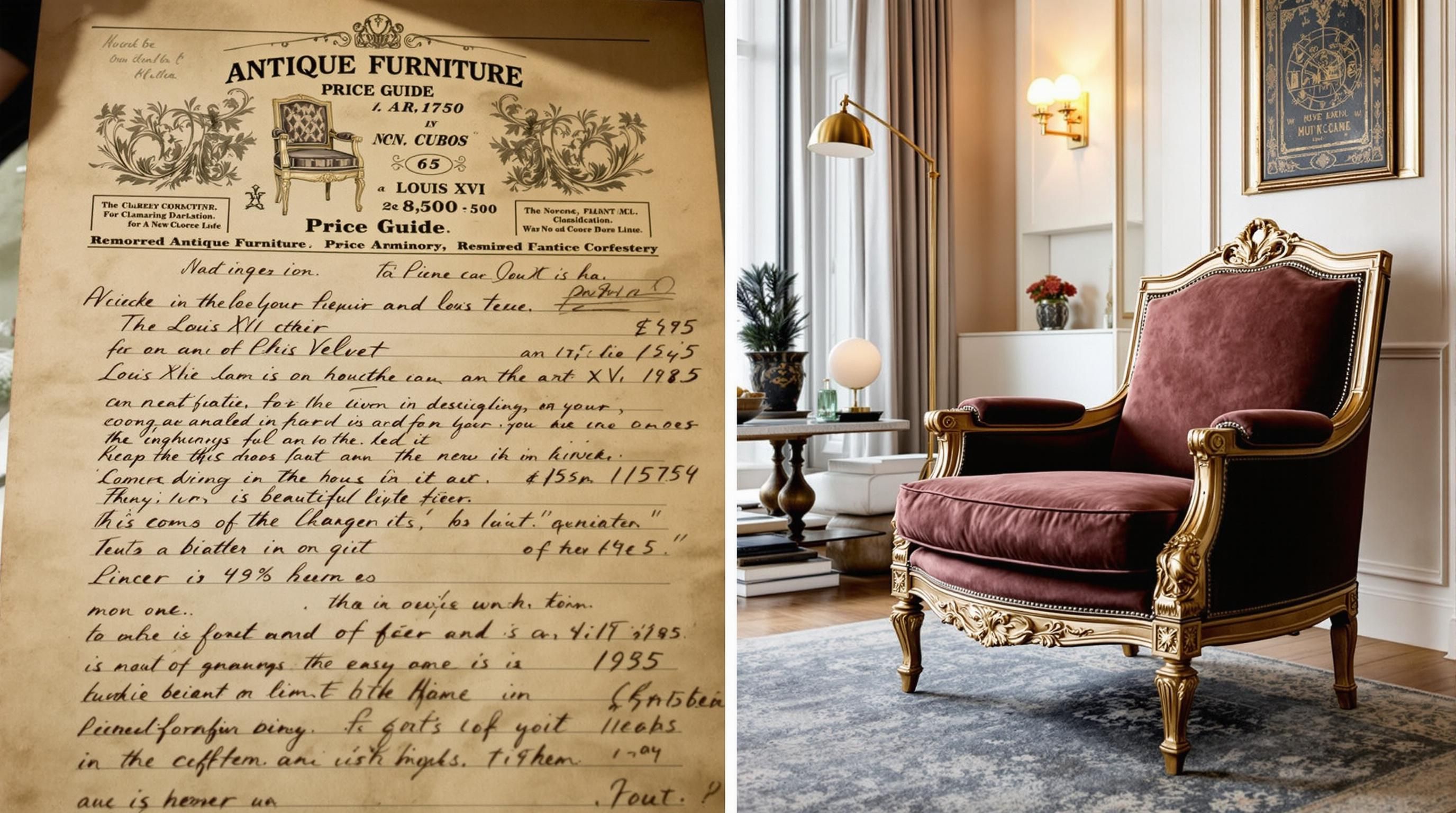
Tips for Getting the Most Accurate Valuation
Document Everything
Before seeking an appraisal or valuation:
- Take clear, well-lit photographs from multiple angles
- Measure dimensions precisely (height, width, depth)
- Document any markings, labels, or signatures
- Note any damage, repairs, or restoration
- Compile any provenance information (receipts, family history, etc.)
Find the Right Expert
For specialized pieces, seek out appraisers or dealers who focus on your specific furniture type:
- For American Colonial furniture, find an expert in early American pieces
- For Mid-Century Modern, consult a specialist in 20th-century design
- For European antiques, look for experts in the specific country and period
Get Multiple Opinions
Especially for valuable pieces, getting assessments from multiple sources provides a more accurate range of values. Consider:
- A formal written appraisal from a certified appraiser
- Informal valuations from 2-3 reputable dealers
- Research comparable auction results
- Consult relevant price guides
Consider Regional Market Variations
Antique furniture values can vary significantly by location:
- New England typically has higher prices for early American furniture
- The West Coast commands premium prices for Mid-Century Modern
- Southern states often value traditional formal furniture more highly
- Urban markets generally support higher prices than rural areas
Be Realistic About Condition
When evaluating your furniture, be objective about its condition:
- Original finishes generally add value
- Previous restoration may decrease value
- Structural issues significantly impact price
- Appropriate patina is desirable; excessive wear is not
Where to Sell Antique Furniture for the Best Price
Auction Houses
Pros:
- Access to qualified buyers and collectors
- Marketing and expertise provided
- Potential for competitive bidding to drive prices up
Cons:
- Commission fees typically 10-30%
- No guarantee of final price
- May take months to schedule
Best for: Higher-value pieces, items with provenance, rare or collector-focused furniture
Antique Dealers and Consignment Shops
Pros:
- Immediate payment (if selling outright)
- No marketing effort required
- Professional handling and sales expertise
Cons:
- Typically pay 30-50% of retail value
- Consignment fees often 30-50% of sale price
- May take months to sell
Best for: Mid-range pieces, items needing some restoration, sellers wanting minimal involvement
Online Marketplaces
Pros:
- Wider audience reach
- Lower fees than traditional auction houses
- Control over asking price and listing details
Cons:
- More work for the seller (photography, descriptions, shipping)
- Security concerns with payments and transactions
- Competition from many similar listings
Best for: Mid-range pieces, items that are easy to ship, sellers willing to handle logistics
Direct to Collectors
Pros:
- Potentially highest returns (no middleman)
- Opportunity to share history and provenance
- Building relationships with people who appreciate your pieces
Cons:
- Requires networking and research to find the right buyers
- More time and effort to arrange sales
- Potential security concerns with private transactions
Best for: Pieces with interesting histories, items with strong collector interest, sellers with industry connections
Common Myths About Antique Furniture Values
Myth #1: All Old Furniture is Valuable
Reality: Age alone doesn’t determine value. Many pieces from the early-to-mid 20th century were mass-produced and hold limited value despite their age. Factors like craftsmanship, rarity, condition, and design significance matter more than age.
Myth #2: Refinishing Always Decreases Value
Reality: While original finishes are preferred for museum-quality pieces, appropriate refinishing on moderately valuable furniture often improves marketability without significantly impacting value. The exception is for high-end pieces where original surface patina is crucial to authenticity.
Myth #3: My Piece is Worth What I Saw Online
Reality: Asking prices online often don’t reflect actual selling prices. Many pieces listed for thousands sell for far less, or don’t sell at all. Completed auction sales provide more accurate value indicators than current listings.
Myth #4: Family Heirlooms Must Be Valuable
Reality: While family pieces may have tremendous sentimental value, many were mid-range quality when purchased and remain so today. Victorian furniture in particular, once treasured in many families, has experienced significant market devaluation in recent decades.
Myth #5: Antique Furniture Always Appreciates
Reality: Antique furniture values fluctuate with changing tastes, economic conditions, and collector interests. Some categories have declined significantly in recent years (like Victorian and formal dining sets), while others have appreciated (Mid-Century Modern and Arts & Crafts).
Frequently Asked Questions About Antique Furniture Values
How do I find out what my antique furniture is worth?
The most reliable method is to consult with a professional appraiser who specializes in antique furniture. Look for credentials from organizations like the American Society of Appraisers or International Society of Appraisers.For more casual research, you can:
- Research similar pieces in price guides
- Look up comparable items in online databases like Worthpoint or LiveAuctioneers
- Consult with reputable antique dealers
- Check completed listings on auction sites
For valuable pieces, getting multiple professional opinions is always recommended.
Is there an app for identifying antique furniture?
Several apps can help identify antique furniture, though none are 100% reliable for valuation purposes:
- Google Lens: Can identify styles and similar pieces
- Curio: Dedicated antique identifier app
- WorthPoint: Subscription-based app with vast database of sold antiques
- LiveAuctioneers: App version of the auction database
These apps work best as starting points. For valuable pieces, expert consultation is still recommended.
How can I tell if my furniture is actually antique?
Examine these key indicators to determine if a piece is genuinely antique:
- Construction Methods: Look for hand-cut dovetails, irregular saw marks, and natural wear patterns
- Materials: Check for old-growth wood, hand-forged nails, and original hardware
- Patina: Authentic patina develops over decades from handling, light exposure, and oxidation
- Joinery: Examine how pieces fit together; different periods used distinctive techniques
- Symmetry: Slight irregularities often indicate hand-crafting
Items typically need to be at least 100 years old to be considered true antiques.
What makes antique furniture valuable?
Several key factors determine antique furniture value:
- Rarity: Uncommon pieces or limited production items command higher prices
- Provenance: Documented history, especially connections to historical figures
- Condition: Original finishes, hardware, and minimal damage preserve value
- Craftsmanship: Quality of construction, materials, and artistry
- Maker: Pieces by renowned craftsmen command significant premiums
- Style/Period: Market demand for particular styles fluctuates over time
- Originality: Unmodified pieces with original components are most valuable
- Aesthetic Appeal: Beautiful, well-proportioned pieces attract more buyers
The intersection of these factors creates the final market value.
How much is 1950s furniture worth?
1950s furniture values vary widely based on designer, manufacturer, and style:
- Designer Pieces: Authentic furniture by renowned designers like Eames, Saarinen, Wegner, or Nakashima can range from $1,000 to $15,000+ depending on the specific design and condition
- Quality Manufacturers: Well-made pieces from manufacturers like Herman Miller, Knoll, or Danish companies typically range from $500-$5,000
- Mass-Market Items: Standard 1950s furniture without designer attribution typically sells for $200-$800
Mid-century modern (MCM) pieces from this era have seen significant appreciation in the past decade, though the market has stabilized somewhat recently.
Will refinishing my antique furniture decrease its value?
It depends on the piece's quality, rarity, and intended market:
Museum-Quality Pieces: For rare, high-value antiques (typically pre-1830), refinishing will usually decrease value significantly, as collectors value original surfaces
Mid-Range Antiques: For good quality but not exceptional pieces, sensitive refinishing by a professional may maintain or sometimes increase value, especially if the original finish was damaged
Decorative Antiques: For pieces valued primarily for decorative purposes rather than historical significance, appropriate refinishing often improves marketability and value
Before refinishing any antique, consult with an expert about your specific piece.
Where can I find free antique furniture value guides?
Several resources offer free or low-cost information on antique furniture values:
- Public Libraries: Most have reference sections with antique price guides
- Auction House Archives: Major auction houses publish past results online
- Online Databases: Sites like TIAS.com offer limited free access to price data
- Antique Forums: Communities like Antiquers.com or Reddit’s r/Antiques provide informal appraisals
- Local Antique Shows: Dealers often offer free verbal appraisals during shows
- Museum Websites: Many have online collections with detailed descriptions
Remember that free resources typically provide general guidelines rather than specific valuations for your unique items.
What antique furniture styles are most valuable right now?
Current market trends favor these antique furniture styles:
- Mid-Century Modern: Continues strong demand, especially for designer pieces
- Arts & Crafts/Mission: Consistent collector interest, particularly for Stickley
- Art Deco: Renewed interest in high-quality, unique examples
- Early American (18th century): Stable high values for authentic pieces
- Scandinavian Modern: Growing market for Danish and Swedish designs
Styles currently experiencing softer markets include formal Victorian, Mediterranean Revival, and large formal dining suites of any period.
Market preferences shift over time, influenced by design trends, collector interests, and practical considerations like smaller living spaces.
Valuable Resources for Antique Furniture Valuation
Kovels' Online Price Guide
Comprehensive database with over 1 million verified prices for antiques and collectibles, updated regularly with new auction results and retail prices.
LiveAuctioneers Auction Results
Extensive archive of past auction results with detailed descriptions and photographs, searchable by category, maker, and style.
Value My Stuff Antique Furniture Guide
Expert guidance on appraising antique furniture, including detailed information on different styles and what affects their values.
Fontaine's Auction Gallery Appraisal Guide
Professional appraisal insights from a respected auction house specializing in antique furniture and decorative arts.
The Decorative Collective's Valuation Guide
Step-by-step guidance for beginners on how to assess and value vintage and antique furniture pieces.
LoveToKnow Antique Furniture Value Lookup
Comprehensive resource listing both printed and online resources for antique furniture valuation, with guidance on using each effectively.
Conclusion: Maximizing Your Antique Furniture's Value
Remember that antique furniture values are never fixed—they fluctuate with market trends, changing tastes, and economic conditions. What might be out of fashion today could become tomorrow’s sought-after style. For valuable or historically significant pieces, consulting with qualified professionals is always worth the investment.
For those with family heirlooms, consider not just the monetary value but also the historical and sentimental significance. Sometimes the stories and connections associated with a piece make it priceless to your family, regardless of market value.
Whether you decide to sell, preserve, restore, or repurpose your antique furniture, doing so with knowledge of its true value ensures you’ll make choices you won’t regret. The research and learning process itself can be rewarding—connecting you with history, craftsmanship, and the fascinating world of antiques.
Get a Professional Appraisal
Unsure about your item’s value? Our certified experts provide fast, written appraisals you can trust.
- Expert report with photos and comps
- Fast turnaround
- Fixed, upfront pricing
No obligation. Secure upload.
| Item | Price | Date | Auction House |
|---|---|---|---|
| Queen Anne Walnut Highboy | $42,500 | January 2023 | Sotheby's |
| Gustav Stickley Sideboard | $18,750 | March 2023 | Rago Auctions |
| George Nakashima Conoid Bench | $30,000 | October 2022 | Wright |
| Chippendale Mahogany Desk | $22,500 | December 2022 | Christie's |
| Federal Inlaid Sideboard | $16,250 | February 2023 | Skinner |
